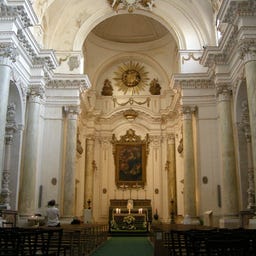Something went wrong!
Hang in there while we get back on track
Best attractions in Syracuse
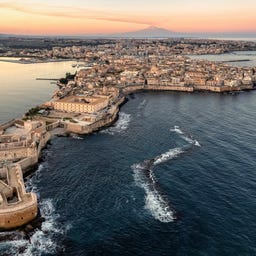
Ortygia, the historic heart of Syracuse, is one of Sicily's most beautiful gems. This enchanting island, connected to the mainland by two bridges, boasts a rich history spanning thousands of years, with ancient ruins, baroque splendor, and vibrant street markets.

The Duomo di Siracusa, also known as the Cattedrale della Natività di Maria Santissima, is an exceptional fusion of Greek, Byzantine, and Baroque architectural styles. You can still admire the original Doric columns of the ancient temple, built by the tyrant Gelon in the 5th century BC to commemorate his victory over the Carthaginians. The cathedral has a tumultuous history - it was the first Christian church in the West, was temporarily converted into a mosque, and after the devastating earthquake of 1693, it received its current Baroque facade with the distinctive Corinthian columns.

The circular Fonte Aretusa on the island of Ortigia is one of the most famous freshwater springs in Sicily and has been closely linked to the history of Syracuse since ancient times. Here, crystal-clear groundwater emerges in a distinctive double basin, surrounded by one of the few colonies of papyrus reeds in Europe.

The Temple of Apollo, constructed in the early 6th century BC, stands as the oldest Doric temple in Sicily. Originally crafted from massive monoliths, it marks the transition from wooden to stone structures and showcases unique architectural features like a double colonnade on the east side.

The Archaeological Park of Neapolis showcases the grandeur of ancient Greco-Roman history. At its heart lies the monumental Greek theater, one of the largest of its kind, built in the 5th century BC. The park also features the Orecchio di Dionisio, a striking man-made cave renowned for its acoustics. Completing the park’s highlights is the Roman amphitheater from the 3rd century AD, once a venue for gladiatorial contests.

Hidden within the ancient Latomia del Paradiso lies this remarkable limestone cave - 23 meters high and 65 meters deep. For centuries, it has captivated people with its exceptional acoustics and poignant history. It was Caravaggio, in 1608, who bestowed its name, inspired by the cave's ear-like shape and the legends surrounding Dionysius.

In the middle of Piazza Archimede in Syracuse stands the monumental Fontana di Diana, an impressive testament to the early 20th century. Created by Giulio Moschetti between 1906 and 1907, the fountain features the hunting goddess Diana with her bow and arrow, surrounded by the mythological scene of Aretusa transforming into a spring.

Built in ancient Greece and impressively preserved to this day, the Teatro greco di Siracusa is one of the oldest theaters in the Western world. Carved into the rock in the 5th century BC, this amphitheater once accommodated up to 15,000 spectators and was used for performances by great playwrights like Aeschylus and Euripides.

The monumental Basilica Santuario Madonna delle Lacrime in Syracuse rises 103 meters into the Sicilian sky with its distinctive concrete cone architecture. This modern sacred building, consecrated by Pope John Paul II in 1994, was created in response to an extraordinary event: in 1953, a plaster statue of the Madonna wept tears for several days, attracting thousands of believers. In the spacious basilica, which can accommodate up to 11,000 people, you will find not only the original Madonna image but also valuable artworks like an 18th-century wooden crucifix. As the only regional Marian shrine in Sicily, the basilica remains an important pilgrimage site and spiritual center of the island to this day.

Perched atop Ortygia Island, the fortress is a stunning example of medieval military architecture, offering expansive sea views. Built between 1232 and 1240 by Emperor Frederick II, its massive walls, four cylindrical towers, and magnificent marble entrance adorned with intricate arches and sculptures are truly impressive.
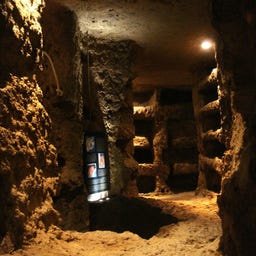
Deep beneath the streets of Syracuse lies a vast network of early Christian catacombs from the 3rd and 4th centuries, second in significance and size only to those in Rome. The Catacombs of San Giovanni, the only ones open to the public, present themselves as an underground city with streets, squares, and multiple levels, with their main gallery cleverly integrated into an ancient Greek aqueduct.
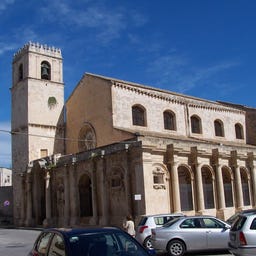
At the site where the holy Lucia was martyred in 304, today stands the Santuario di Santa Lucia al Sepolcro - an impressive blend of Norman, Renaissance, and Baroque architecture. The church, originally built in the 12th century, houses behind the altar the famous painting "Burial of Saint Lucia" by Caravaggio from 1608, as well as a statue of the saint by Gregorio Tedeschi from 1634.
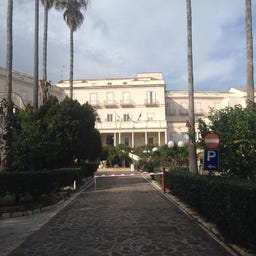
As the oldest grand hotel in Italy built specifically as a hotel, the Villa Politi has been majestically overlooking the ancient Latomia dei Cappuccini in Syracuse since 1862. Designed in the Liberty style by the Austrian noblewoman Maria Theresa Laudien, who married the Sicilian painter Salvatore Politi, the hotel has a rich history.
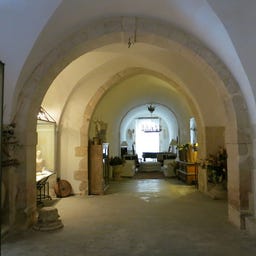
Hidden beneath the Residenza Alla Giudecca Hotel in Ortigia is the oldest Jewish ritual bath in Europe, built in the 6th century. Rediscovered in 1989, this fascinating mikveh lies 18 meters underground and features five basins carved into the rock, fed by a natural spring. Visitors descend a steep stone staircase into a room with a vaulted ceiling, surrounded by four limestone columns. Once a sacred site for ritual purification, the mikveh remained hidden for centuries after being filled with rubble and sealed during the Inquisition in the 15th century.
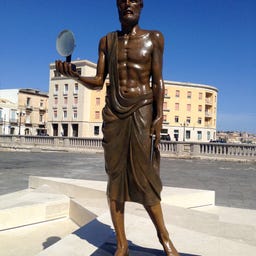

In the historic center of Ortigia, you'll find the fascinating Palazzo Bellomo, an art museum housed in an impressive city palace from the 13th/14th century. The architectural blend of Swabian and Catalan Gothic elements provides the perfect backdrop for significant artworks ranging from the Middle Ages to modern times, including the famous "Annunciation" by Antonello da Messina from 1474.
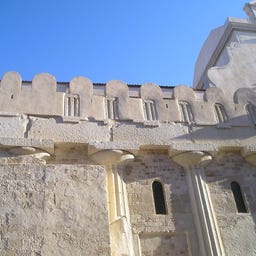
At the Cathedral of Syracuse, take note of the visible columns from the ancient Temple of Athena. Built in the 5th century BC, this temple was once one of the most impressive remnants of ancient Greece in Syracuse. It was constructed by the tyrant Gelo after his victory over the Carthaginians.
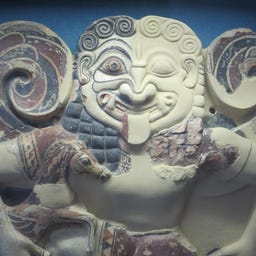
At the Paolo Orsi Regional Archaeological Museum, one of the most significant archaeological museums in Europe, you can embark on an impressive journey through time, from prehistory to the Roman era. The modern Villa Landolina houses precious artifacts from all over Eastern Sicily, collected under the guidance of the archaeologist Paolo Orsi between 1895 and 1934, across 9,000 m² of exhibition space. During World War II, these valuable exhibits were protected from bombings in the tunnels of the Castello Eurialo, before finding their current home in the museum building designed by architect Franco Minissi in 1988. In the expansive museum park, you will discover not only ancient Greek and Roman artifacts but also a historic necropolis and a small non-Catholic cemetery.
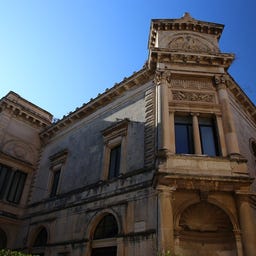
The Teatro comunale in Syracuse, which opened in 1897, has a rich history marked by long periods of closure and extensive renovations. In this magnificent theater with its impressive entrance portico and ornate facade, you will find stunning ceiling paintings by Gustavo Mancinelli as well as two precious Murano chandeliers donated by Dolce & Gabbana. After being closed for 54 years, the theater reopened in 2016 and now accommodates 500 spectators in its historic hall for performances and events that you can explore through guided tours.
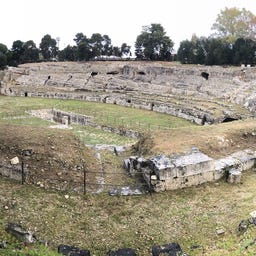
In the archaeological park of Syracuse, you will find one of the most significant structures from the early Roman imperial period: the amphitheater, largely carved from rock during the time of Augustus. With impressive dimensions of 140 x 119 meters and a sophisticated system of stairs and underground passages, this building showcases the architectural brilliance of its creators.
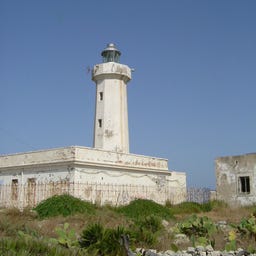
At the southeastern tip of Sicily stands the Faro di Capo Murro di Porco, an impressive lighthouse built in 1859 that still actively guides ships today. The 20-meter tall white tower, with its distinctive decagonal design and gray metal dome, emits a white flash of light every 5 seconds, visible up to 17 nautical miles away.
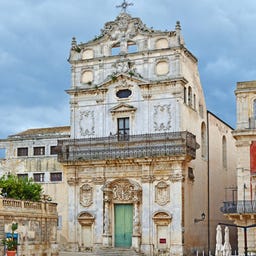
The Chiesa di Santa Lucia alla Badia stands proudly at the Piazza Duomo in Syracuse and is dedicated to the city's patron saint. Originally built as a monastery in the 15th century, the building was completely destroyed by the earthquake of 1693 and was rebuilt in the Baroque style under the guidance of architect Luciano Caracciolo.
In the historic Giudecca of Syracuse, you can explore the baroque Chiesa di San Filippo Apostolo, which was rebuilt after the devastating earthquake of 1693 and consecrated in 1742. Beneath the magnificent church with its distinctive central dome, there are three fascinating underground levels, including a crypt and one of the few preserved Jewish ritual baths (Mikve) in Europe. The intricately designed interior features late baroque stucco work from the early 19th century, as well as a remarkable organ by Pietro Santuccio from 1757. After a comprehensive restoration, the church has been open to visitors since 2010 and offers guided tours of its historically significant underground areas, especially in the spring and summer months.
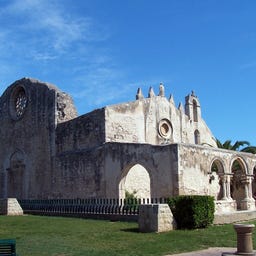
In the Norman-Gothic Chiesa di San Giovanni alle Catacombe from the 6th century, you can expect a fascinating glimpse into Sicily's early Christian history. The three-nave church stands over the extensive Catacombs of Syracuse and houses in its crypt the tomb of the first bishop of Syracuse, San Marciano, who met his martyr's death here in the 3rd century.
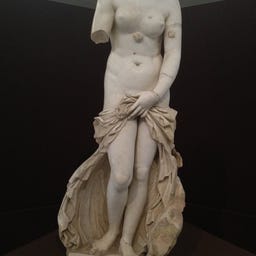
In the Museo Archeologico Regionale Paolo Orsi in Syracuse, you can admire the Venere Landolina, one of the most remarkable Roman marble sculptures from the 1st century BC. This elegant depiction of Venus, discovered by Saverio Landolina Nava in 1804, captivates with its lifelike modeling and masterful treatment of the nude, despite the missing head.
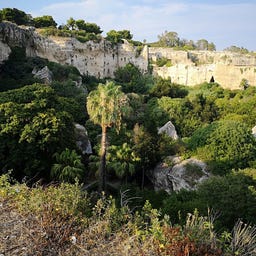
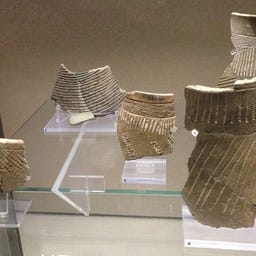
At first glance, it may seem unremarkable, but this is one of the most important Neolithic villages in Sicily from the 5th century BC, which gave its name to the Stentinello culture. The archaeological site near the northern entrance of Syracuse contains remains of rectangular buildings and a rock-hewn trench.
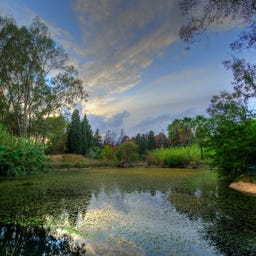
South of Syracuse, there is a fascinating nature reserve that includes the Ciane River and a historic salt production area. The name "Ciane" comes from the Greek word for "green-blue," referring to the distinctive color of the water and the lush papyrus vegetation.
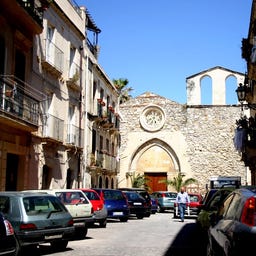
On the picturesque Giudecca in the island of Ortigia, you will discover the Chiesa di San Giovannello, one of the most significant churches in Syracuse, known since its founding as "the first after the cathedral." The church's current appearance dates back to 1380, built on the foundations of an early Christian basilica from the 4th century. With its magnificent 15th-century portal, the rose window, and the two (now roofless) bell towers, this three-nave structure stands as a captivating example of medieval architecture.
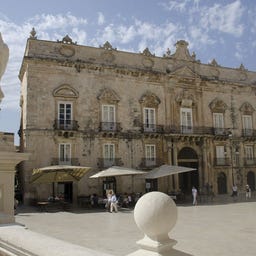
The magnificent Palazzo Beneventano del Bosco stands proudly at the Piazza Duomo in the heart of Ortigia and is considered one of the most beautiful palaces in Syracuse. After its destruction in the great earthquake of 1693, it was rebuilt in 1778 by Baron Guglielmo Beneventano in the Baroque-Rococo style.
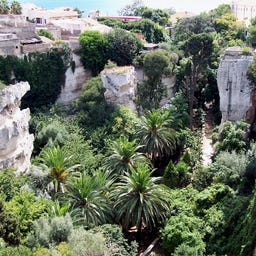
In the largest ancient quarry in Syracuse, you will encounter an impressive labyrinth of deep rock cuts and bizarre rock formations. The Latomia dei Cappuccini has been a quarry since the 6th century BC and was later used as a prison for Athenian war captives before becoming part of a Capuchin monastery in the late 16th century.
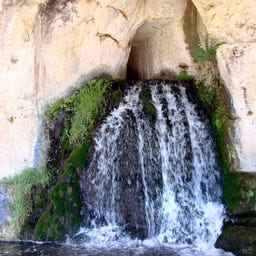
Carved into the rock face of the Temenite Hill, you will find the Grotta del Ninfeo - an artificial cave with a vaulted ceiling and a rectangular pool, located near the Greek Theatre in the archaeological park of Syracuse.

In the Church of San Martino on the island of Ortigia, you encounter one of the oldest churches in Syracuse, with its Norman origins still visible today. The magnificent limestone portal from the Aragonese period and the rose window reconstructed between 1905 and 1919 define the façade of this three-nave building.
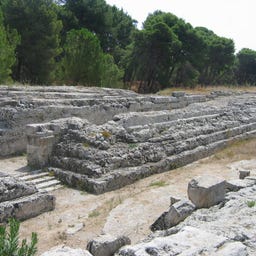
In the archaeological park Neapolis of Syracuse, you will find the monumental remains of the Ara di Ierone, one of the largest altars of the ancient world. Built in the 5th century BC by Hiero II, this sacrificial altar stretched an impressive 198 meters in length and was dedicated to the worship of Zeus Eleutherios, the "Liberator."
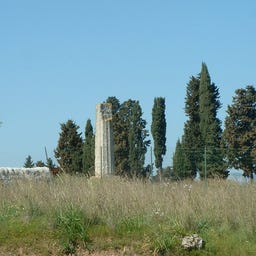
High above the plains of Syracuse stand the two remaining columns of the Tempio di Zeus, one of the oldest Greek temples in Sicily from the early 6th century BC. Also known as the Olympeion, this temple once served as a landmark for sailors and housed not only a magnificent statue of Zeus but also important administrative documents of the city.
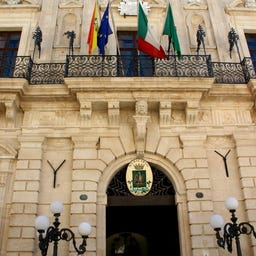
The Palazzo del Vermexio, designed by Giovanni Vermexio in the early 17th century, stands as an elegant example of Sicilian Baroque architecture at the Piazza Duomo in Ortigia. Built between 1629 and 1633, the building still serves as the seat of the city government of Syracuse and impresses with its geometric design featuring Doric-Tuscan columns on the ground floor and Ionic pilasters on the upper level.
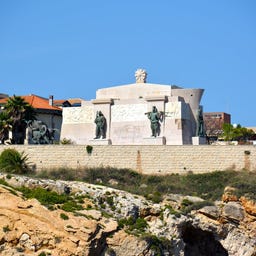
The monumental war memorial at Piazza dei Cappuccini in Syracuse, with its six bronze statues and numerous reliefs, commemorates the fallen Italian soldiers of the colonial wars in Africa. Originally intended for Ethiopia, this ship-shaped monument found its final resting place here after the loss of Italian colonies in World War II.
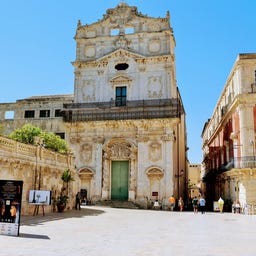
In the heart of Ortigia, right by the Piazza Duomo, stands the magnificent Palazzo Borgia del Casale with its distinctive red facade and intricately wrought balconies. Built in the Baroque style on the foundations of a Aragonese palace from 1396, this palace was once home to Lucia Migliaccio, who later became the morganatic wife of King Ferdinand I.
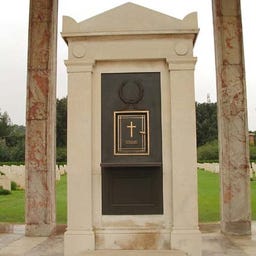
On your way to the Municipal Cemetery of Syracuse, you'll find the Syracuse War Cemetery, known locally as the "Cimitero inglese." This is the final resting place of over 1,000 Commonwealth soldiers who fell during World War II. The memorial, conceived in 1943 during the invasion of Sicily and officially inaugurated in 1953, has been honored by notable visitors such as Winston Churchill and Prince Edward.
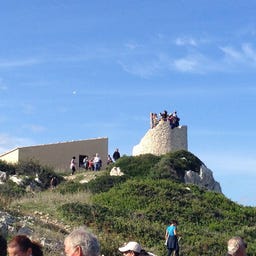
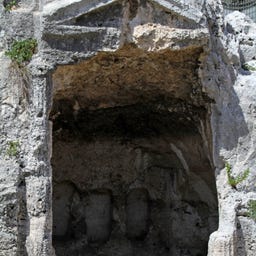
In the northern corner of the Archaeological Park Neapolis, you will find the Tomb of Archimedes, a burial site carved into limestone dating from the 1st century BC to the 1st century AD.
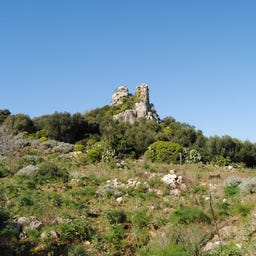
Near Syracuse, you will discover the Riserva naturale integrale Grotta Monello, a 60-hectare nature reserve featuring an impressive karst cave that was first explored in 1948 by Lucio Vizzini and Santo Tiné.
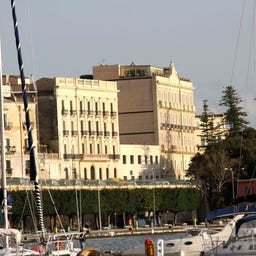
In the historic center of Ortigia, the elegant Hotel Des Etrangers welcomes you, a landmark of Sicilian Art Nouveau and Neoclassicism from the early 20th century. Originally run by the German widow Politi for winter guests, the building, constructed in 1906, was long a top destination for travelers on their Grand Tour of Sicily.
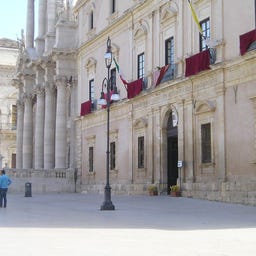
The Palazzo Arcivescovile at Piazza del Duomo holds over 800 years of ecclesiastical history of Syracuse within its walls. Originally built in the 13th century as a Swabian palace, it was extensively redesigned in 1618 by Andrea Vermexio on the orders of Bishop Juan de Torres Osorio.
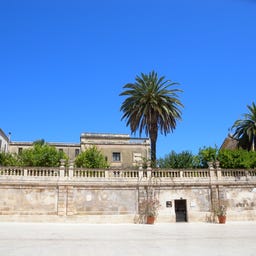
Beneath the magnificent Piazza del Duomo in Syracuse lies a fascinating underground tunnel system that connects the highest point of the old town, Ortigia, with the harbor promenade. The extensive passages were originally created as a quarry for the construction of the Duomo di Siracusa and were expanded in the 17th century under Bishop Paolo Faraone to include an important cistern for the island's water supply.
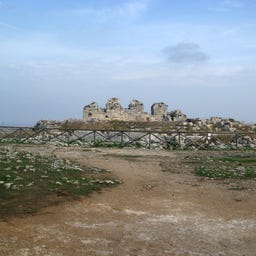
The Castello Eurialo, built by Dionysios I. in the 4th century BC, is considered a masterpiece of ancient fortification and was once the centerpiece of Syracuse's defense system.
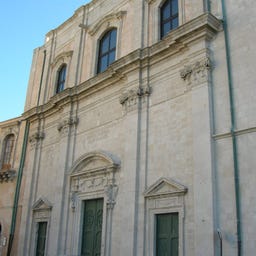
The baroque Chiesa di S. Filippo Neri has been standing since the 17th century on the eastern promenade of Ortigia, the historic center of Syracuse. The original building by architect Giovanni Vermexio was rebuilt after the devastating earthquake of 1693 and features its distinctive two-story façade with an asymmetrical portal and striking siren caryatids.
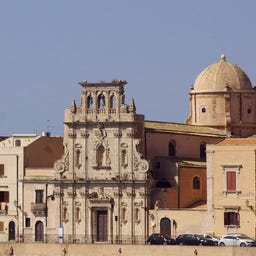
The Chiesa dello Spirito Santo, with its striking Baroque facade and the only external dome in Syracuse, dominates the waterfront of Ortigia. The three-tiered church, built from light limestone, has its origins in a predecessor structure from the 14th century and took on its current form between 1727 and 1797 under the guidance of architect Pompeo Picherali.
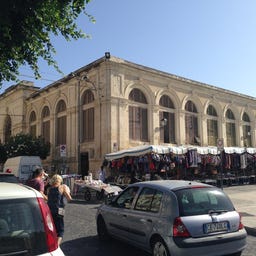
In the historic heart of Ortigia, near the Temple of Apollo, you will find the impressive Antico Mercato - an elegant market hall from the late 19th century with 24 arches and a beautifully decorated courtyard. Completed in 1900 according to designs by Edoardo Troja, this building served as the central city market of Syracuse until the 1980s and was meticulously restored at the turn of the millennium.
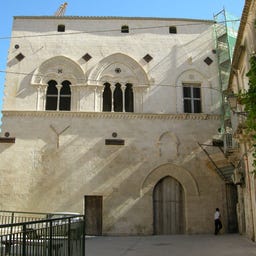
The impressive Palazzo Montalto near Piazza Archimede is one of the best-preserved examples of Gothic Chiaramontano style on Ortigia. Built in 1397 by Maciotta Mergulese, the palace captivates with its intricately decorated facade featuring a characteristic triple arcade (Trifora), with twisted columns and floral ornaments typical of the era.
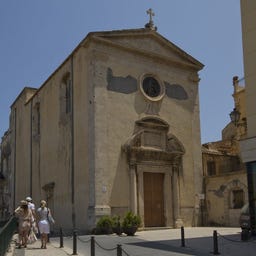
The baroque Chiesa di San Paolo stands right next to the ruins of the ancient Apollo Temple in the historic center of Syracuse. At this significant site, where a church has existed since early Christian times, the current building from the 17th century commemorates the three-day stay of the Apostle Paul in the city, as noted by an inscription in the tympanum.
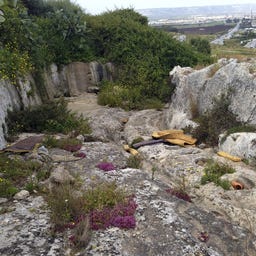
The Porta Scea, carved into the rock, is one of the ancient city gates in the north of Syracuse and was once part of the powerful Dionysian fortifications. The limestone gate cleverly navigates a height difference along a winding path and is located near the historic Exapilon Gate, which opened the way to Catania.
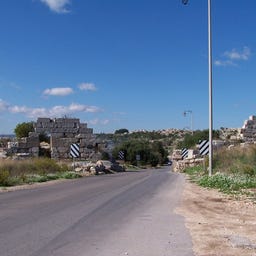
The Mura dionigiane, the most impressive and extensive defensive walls of classical antiquity, were built between 402 and 397 BC by the tyrant Dionysius I. to protect Syracuse. With a total length of 27 kilometers and constructed by 70,000 slaves and 6,000 oxen, they even surpassed the famous Aurelian Walls of Rome.
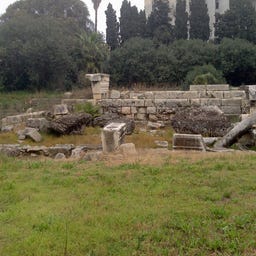
Near the ancient forum of Syracuse, you discover an impressive Roman complex featuring a theater, a temple, and an expansive colonnaded courtyard. This ensemble, uncovered in 1864 by Francesco Saverio Cavallari, was long mistakenly referred to as the "Roman Gymnasium," while researchers today believe it to be a sanctuary for the Serapis cult.
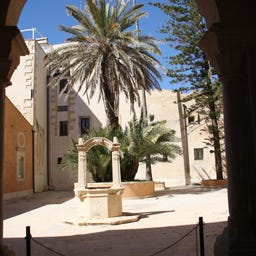
In the former Sant'Agostino Monastery on the island of Ortigia, a fascinating museum awaits you, dedicated to the millennia-old culture of papyrus. The Museo del Papiro, founded in 1987 by Corrado Basile and Anna Di Natale, not only houses an impressive collection of ancient manuscripts and everyday objects made from papyrus but also the Italian Institute for Egyptian Civilization.
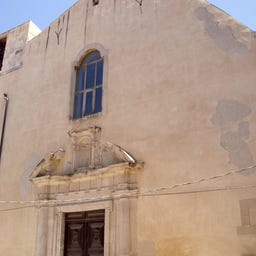
The Chiesa del Carmine in the historic center of Syracuse has a rich history that dates back to the 14th century when it was built by Carmelites. After suffering severe damage from the earthquake in 1693, the church was extensively restored and now features a three-nave layout with ornate chapels.

The "Tropical Aquarium of Syracuse" was a place, currently closed to the public, where various fish, mostly from the waters of the Mediterranean Sea, including the coasts of Aretusa, as well as lakes and rivers from tropical environments such as South America and Africa, could be found.
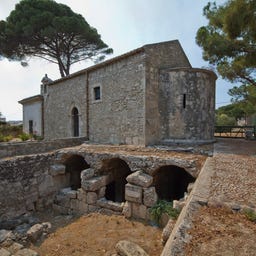
The "Church of San Nicolò ai Cordari" was one of the first churches built in Syracuse.
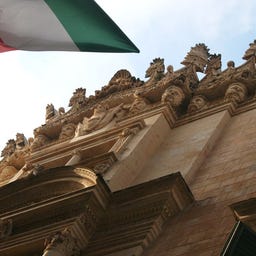
The "Impellizzeri Palace" is one of the Rococo noble buildings in Syracuse; located on the island of Ortigia.
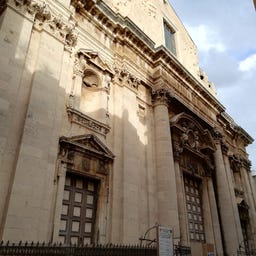
In the historic center of Syracuse stands the baroque Chiesa di San Giuseppe e Sant'Ignazio di Loyola, which was built between 1635 and 1687 as part of a monumental Jesuit complex. Also known as the Chiesa del Collegio dei Gesuiti, the church impresses with its magnificent baroque facade featuring a wrought-iron gate and houses remarkable artworks in its three-nave interior, including oil paintings by Antonio Madiona. After suffering severe damage from the earthquake of 1693, it was restored and abandoned by the Jesuit order in 1767. The church is currently undergoing extensive renovation. While the main building is closed at the moment, the crypt, accessible via Via del Collegio, serves as an exhibition space for contemporary art.
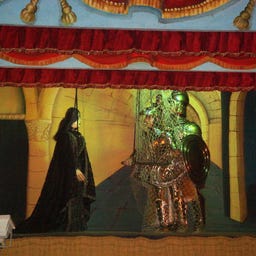
The "Aretuseo Puppet Museum" is located in Syracuse. It showcases artistic and theatrical material related to the tradition of puppet opera.
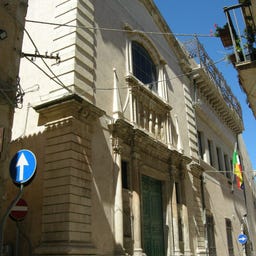
The "Church of San Benedetto" - currently the "Romanian Orthodox Parish of Saint Apostle Paul and Saint Lucia Virgin and Martyr" - along with the original monastery of the Benedictine Order, constituted the monumental center located on Via Capodieci in the historic center of Syracuse. Belonging to the Archdiocese of Syracuse, the Vicariate of Syracuse under the patronage of Saint Lucia, the Archpriesthood of Syracuse, Romanian Orthodox Parish of Saint Apostle Paul and Saint Lucia Virgin and Martyr.
The "Greek Arsenal of Syracuse" is a part of the small port, known as "Lakkios," where boats were historically built and repaired. To facilitate the work, they could be pulled ashore when damaged or to allow for the refurbishment of the hulls.
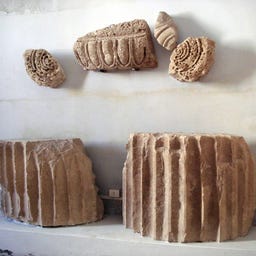
On the highest point of the island of Ortigia, you will find the remains of the Artemision di Siracusa, a rare Ionic temple from the 6th century BC. Also known as the Tempio Jonico, this structure was built by the Gamoroi, the descendants of the first Greek settlers from Corinth, in honor of the city goddess Artemis. Construction came to a halt around 500 BC when the Gamoroi were expelled - today, only fragments like a large capital and the lower part of a column testify to its former glory. The temple, which shares architectural similarities with large temples in Asia Minor, is now part of the UNESCO World Heritage site "Syracuse and the Rock Necropolis of Pantalica."
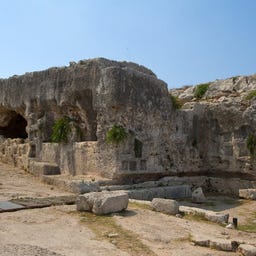
On your way to the ancient Greek Theater of Syracuse, the Via dei Sepolcri takes you up the Temenite Hill, a 150-meter-long road flanked by high rock walls. The votive niches carved into the rock are a testament to the Greek hero cult, where notable figures who passed away here were honored.
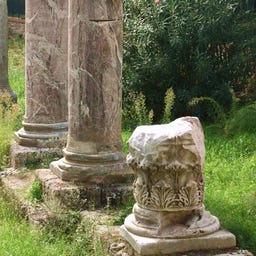
In the heart of Syracuse, you will find the Foro Siracusano, a historic green space that once served as a Greek agora and later as a Roman forum. Three elevated marble columns from the imperial era and a section of a Roman road still testify to the former significance of the site, which Cicero described in 70 BC with its magnificent colonnades and the Temple of Zeus.
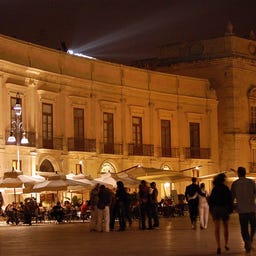
The "Arezzo della Targia Palace" is a noble building located in Piazza del Duomo in Syracuse, next to the Beneventano del Bosco Palace.
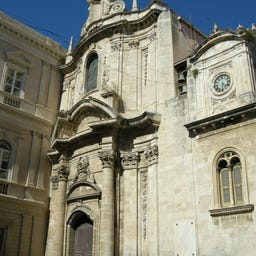
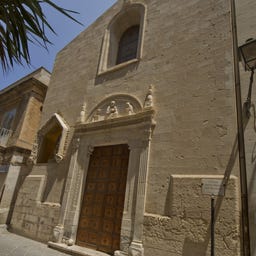
In the historic old town of Syracuse, you discover the Chiesa di Santa Maria dei Miracoli, a Catholic church with a fascinating history. The Renaissance entrance, with its intricate tympanum, is the only element that survived the devastating earthquake of 1693, which destroyed the rest of the church.

The Arch of Augustus in Syracuse is an impressive Roman structure from the time of Augustus, discovered during excavations near the Roman Amphitheater in the 1950s. The arch, about 13 meters high and made of white limestone, marked the entrance to an important east-west route leading to the southern access of the amphitheater.

The "Sea Museum" of Syracuse, known as "Sirmuma," is located in Ortigia, at the Vittorio Emanuele II square, better known as "Marina."
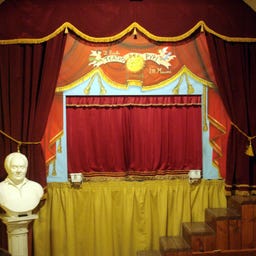
The "Piccolo Teatro dei Pupi" is a theater of "Sicilian Puppets," located in Syracuse.
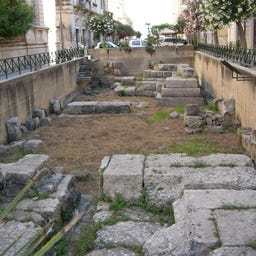
On Via XX Settembre, you will find the remains of the Porta Urbica, the only surviving city gate from the ancient fortifications of Ortygia. This structure, uncovered in 1977, was once built by Dionysios I and connected the Temple of Apollo with the Temple of Athena through its two massive square towers, each over 8 meters wide.

The "Arkimedeion" was a science and technology museum dedicated to Archimedes. Located in the city of Syracuse, it showcased the inventions, discoveries, and concepts of the famous Greek mathematician and physicist who lived in Syracuse between 287 and 212 BC.
